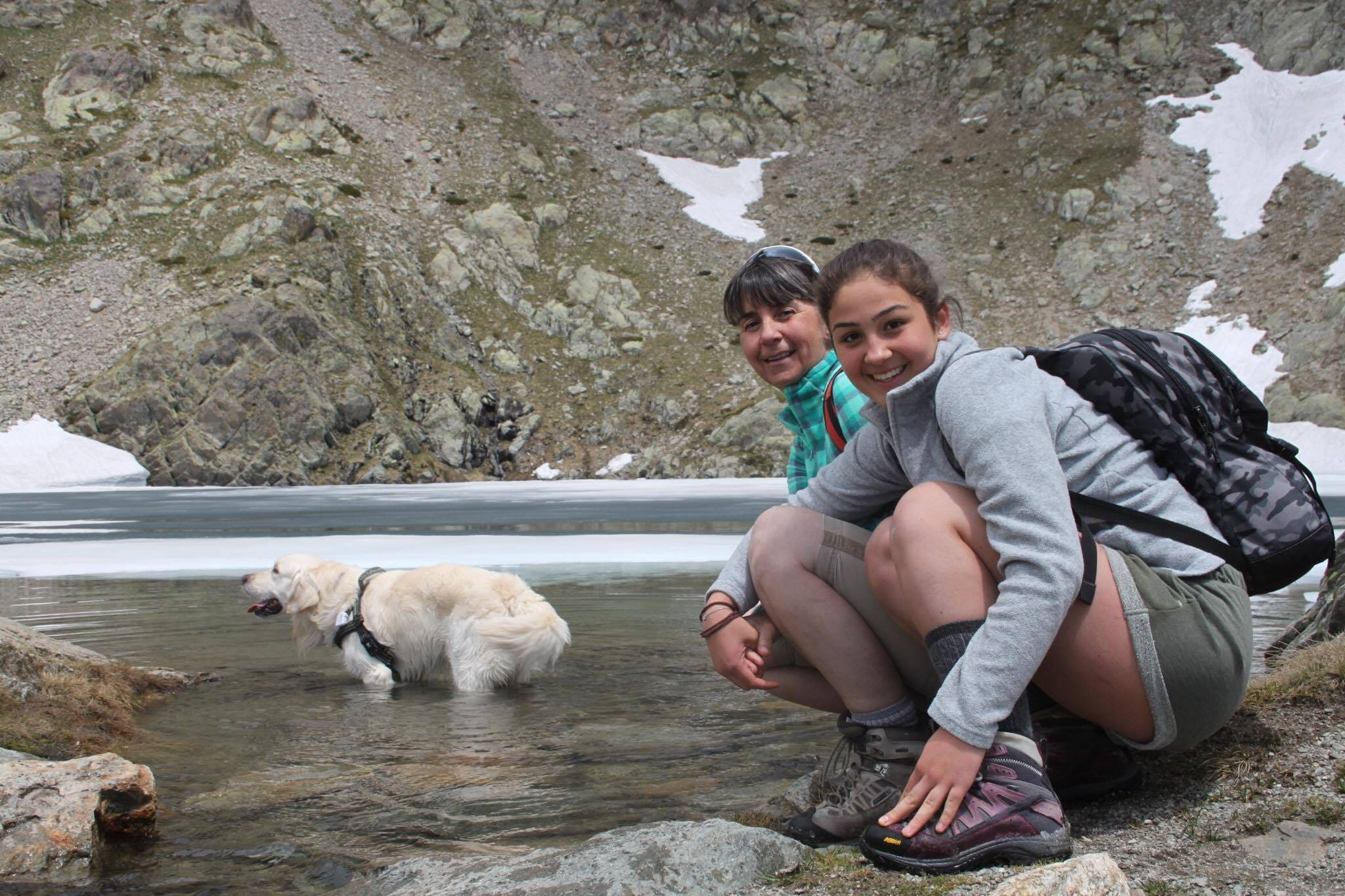How Far Can Dogs Smell? Dog Sniffing Senses Explained
Your dog sniffing around might be able to discover illnesses, sniff out illegal substances, and even find out a mate nearby...but their sense of smell is also a key reason they run away. Here's how.
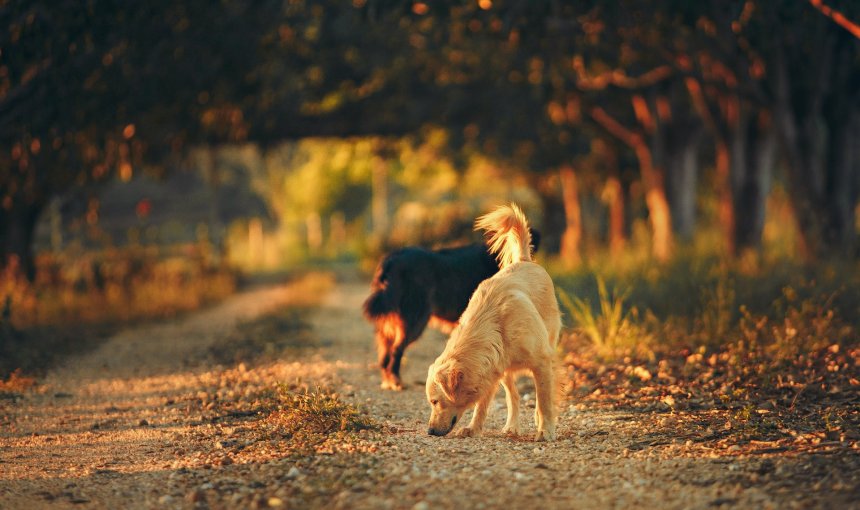
From tracking down bad guys to sniffing out your neighbor’s barbecue – your furry friend’s sense of smell is nothing short of a superpower. But have you ever wondered just how far can dogs smell? And how their sense of smell is actually one of the major reasons why dogs run away – and get lost?
In this post, we’re going to cover what it means when you see a dog sniffing around like they’re on a mission. Let’s get started.
So, how far can a dog smell?
On a good day, dogs can smell up to a distance of 12 miles (or 19 kilometers) around them! The exact range can, however, depend on factors like wind, the type of scent, and their environment. But your dog sniffing around isn’t just them being goofy – rather, it’s the primary way your buddy senses the world around them.
In fact, your dog’s sense of smell might even be their main sense.1 Which is why it’s thousands, if not millions, of times more sensitive than that of humans. For example, your dog has approximately 300 million olfactory receptors – while we have only around 5-6 million.
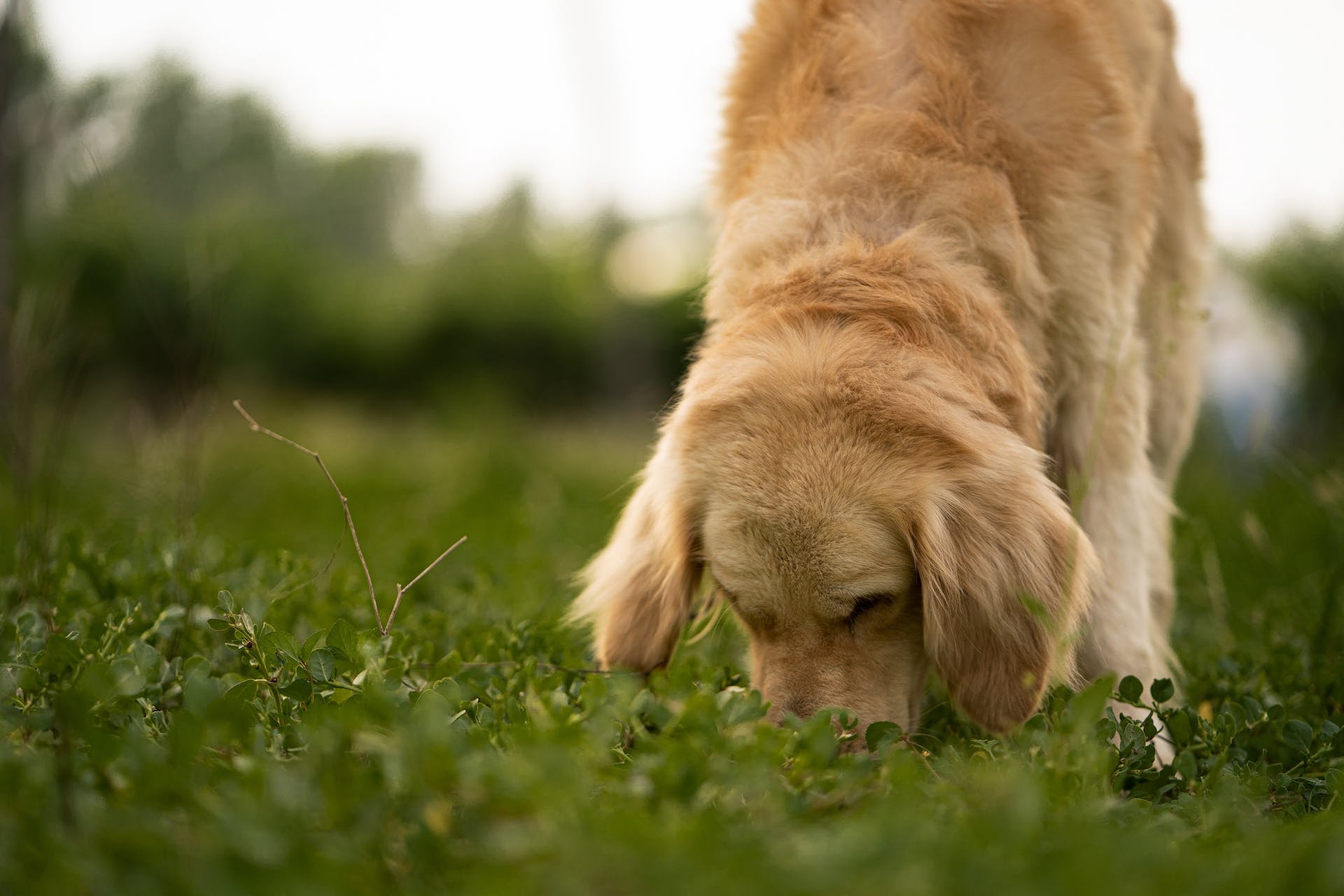
Dogs also have a sensory organ called the Jacobson’s organ, which allows them to detect pheromones and other chemical cues in scents. This is how your dog is able to sniff out who in their neighborhood might be in heat – and even our emotions, especially when we’re stressed or afraid. Which is why your dog always seems to know when you need a hug the most. (Or seems more restless and eager when they sense an upcoming “meet and greet” with the neighborhood female dogs.)
Now that we’ve covered the question, how far can dogs smell, here are some factors that can affect just how far.
What can affect how far a dog can smell?
When your dog picks up a scent, it’s a rich experience that helps them pick up a ton of information about who or what they’re tracking. But how far can dogs smell when, say, it’s raining or snowing? Or what about if they’re in a forest?
Your dog’s sensory superpowers can be affected by a ton of factors in their environment – and also their breed and training. So let’s explore some of them that might have an impact on your dog sniffing around.
Breed
Some dog breeds excel at sniffing things out than others. For example:
- Labrador Retrievers, German Shepherds, and Belgian Malinoises make for excellent police sniffer dogs because of their drive and trainability.
- Bloodhounds are known for their excellent tracking abilities, while Beagles are masters of sniffing out contraband items.
- Border Collies are excellent search and rescue dogs, sniffing out missing people and rescuing them in time.2
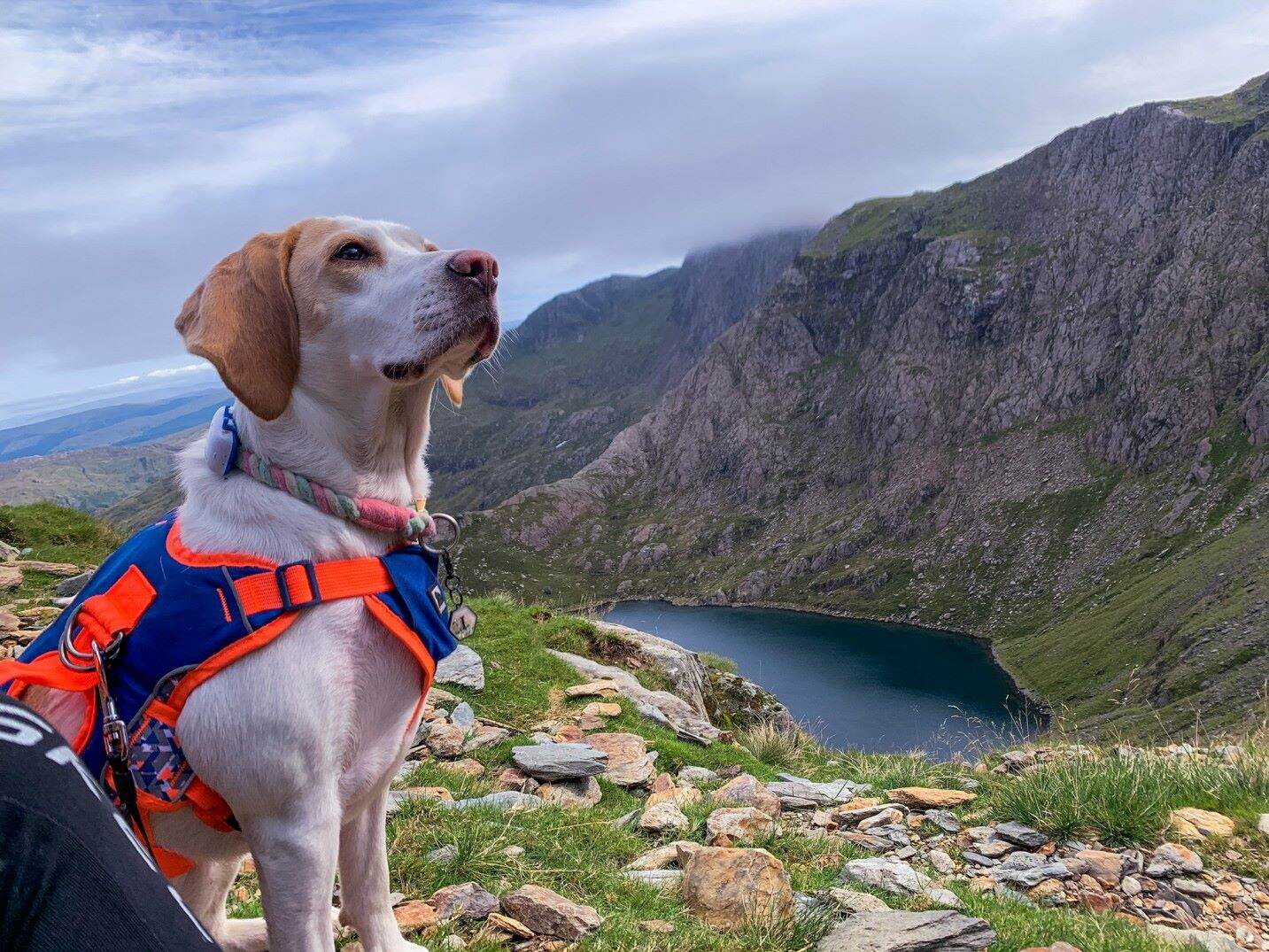
Training
With training and effort, you can vastly improve your dog’s ability to detect and identify different scents. Search and rescue dogs, for example, usually go through hours of intensive training before they qualify as such. Because their work involves them wandering long distances, they have to be able to reliably identify a scent and track it down to where it’s coming from. (No matter how remote an area it is.)
Some dogs also have a higher prey drive than others. Dogs like Pointers, Irish Setters, and Borzois have been trained for centuries to sniff out, track, chase, and capture prey. Which makes them excellent hunting dogs – who also tend to bolt at the slightest sight, sound, or smell to go and investigate.
In fact, it’s this hunting instinct that caused Imogen, an energetic Borzoi, to bolt the fence and escape into the woods nearby. Where she ended up crashing through the ice into a frozen lake. Thankfully, her Tractive GPS and its Location History function helped her mum track her immediately – and rescue her from freezing and drowning.
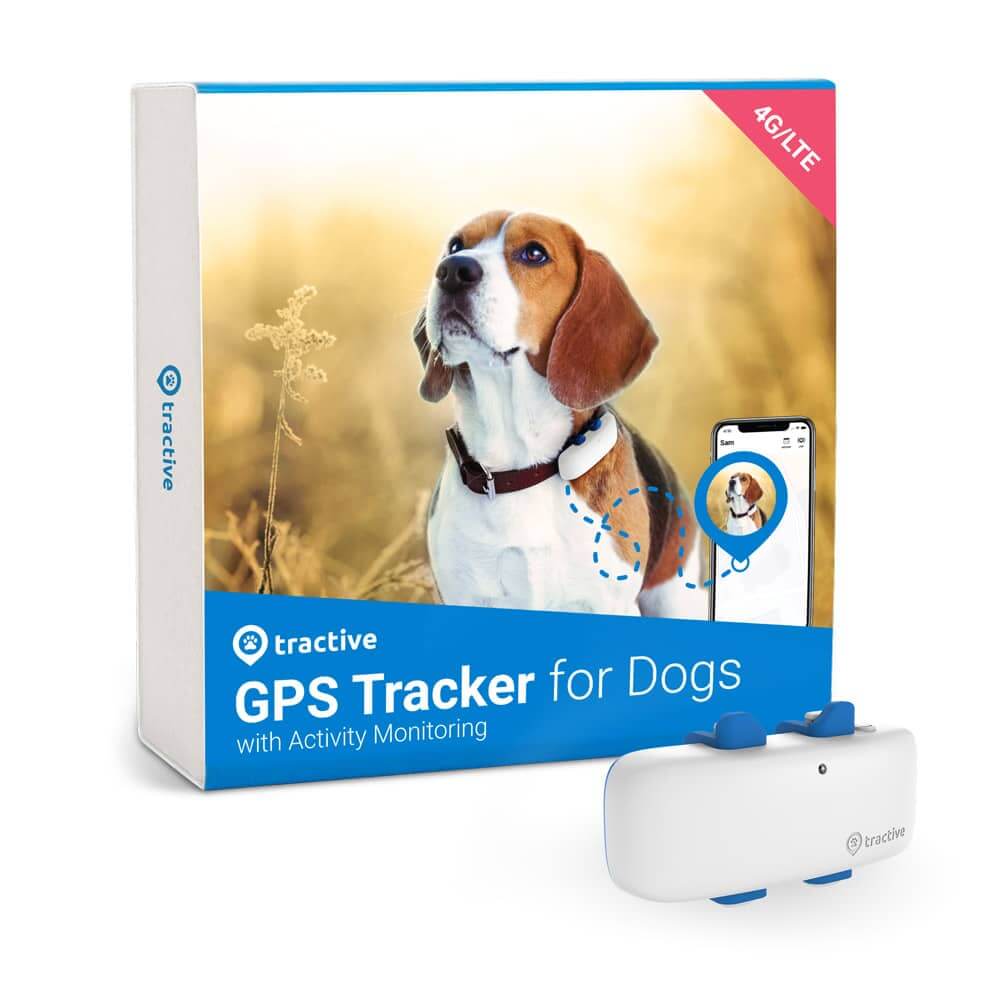
Always know where your dog is
Follow every step in real-time with unlimited range. Get alerts if they wander too far. Keep them happy & healthy with Wellness Monitoring. And let others – like walkers or sitters – keep an eye on your dog too.
Terrain
Just mowed your lawn? You might just send your dog’s nose into overdrive. Generally, a dog sniffing around an open field will do much better than one investigating a dense forest. (Because scents tend to dissipate in densely-vegetated areas.) Similarly, if your dog is moving between shade (like under trees) into sunshine, it can change the scents they pick up.3
Even the time of year can affect how far dogs can smell across different terrains. (Like, for example, in early spring when the grass begins to grow again.)
Weather conditions
Environmental factors like the direction of the wind, humidity, and temperature can all affect how far dogs can smell. For example, the direction of the wind can either carry a scent towards them – or away instead, affecting the range of detection. Typically, dogs are able to smell better in cooler temperatures and when it’s not too humid.
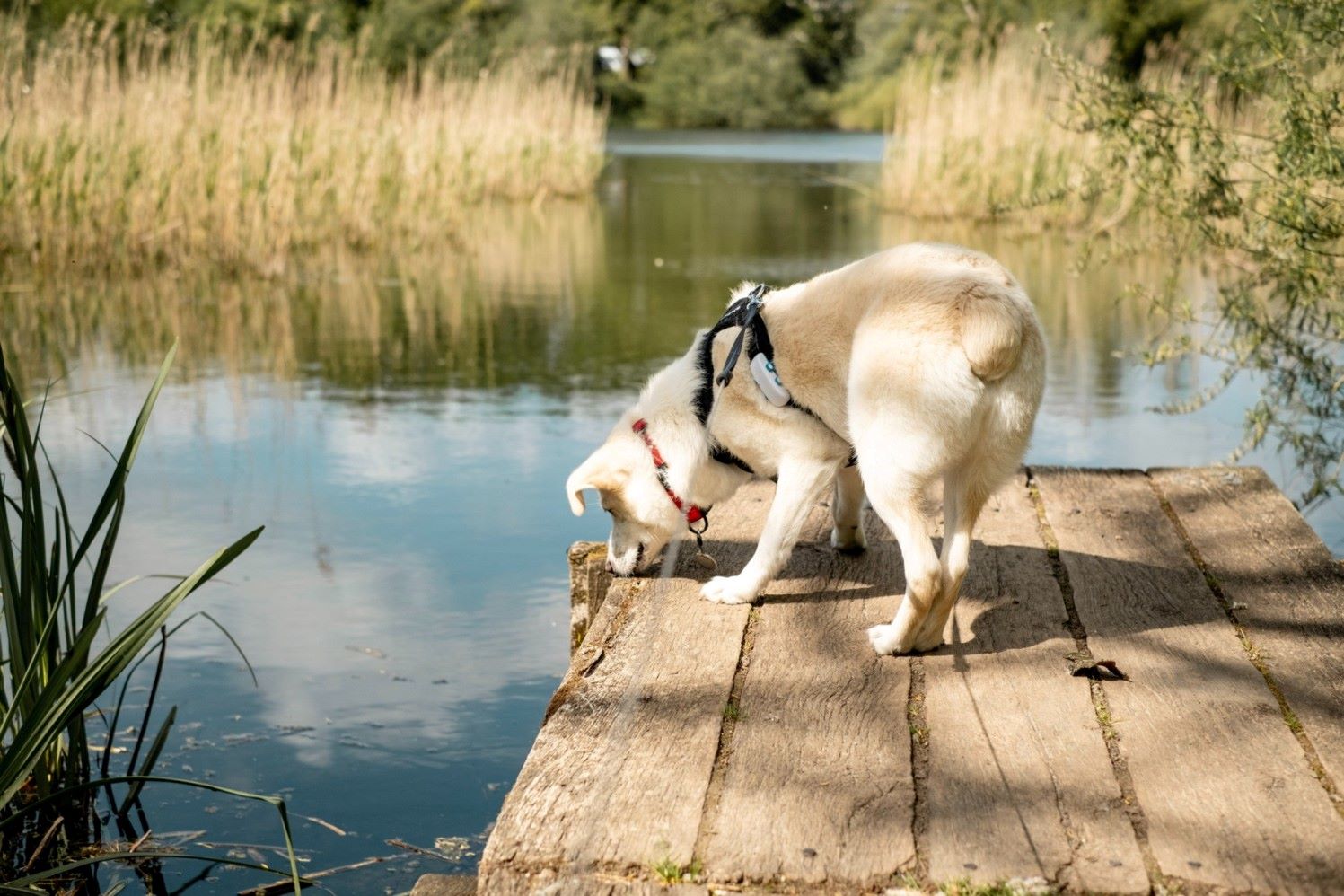
However, be careful if you’ve got a snow loving dog – snow can often mess with a dog’s sense of smell. Which can make it difficult for your dog to make their way back home if they run off to find the biggest snow pile.
Typically, dogs tend to smell the best on cool, rainy days – but less so if the weather’s cold enough for it to snow.4 Besides, scent conditions can even change throughout the day. So it’s always a good idea to stay on top of your dog’s safety, if they’re in the habit of wandering off to investigate a scent.
Discover GPS & Health Trackers For Dogs
Age
Much like humans, senior dogs tend to smell, hear, see, move, and smell less well as they did when younger. Which just means you need to give your grand-paw a bit more time and patience to adapt, in case you’re considering training them. What’s important is that your dog should still enjoy being active and responding to you.
💡 Older canines might be at a higher risk for dog dementia. Which might cause them to wander away or find it difficult to make their way back home if they’re disoriented. (And even more so in cold, snowy weather.)
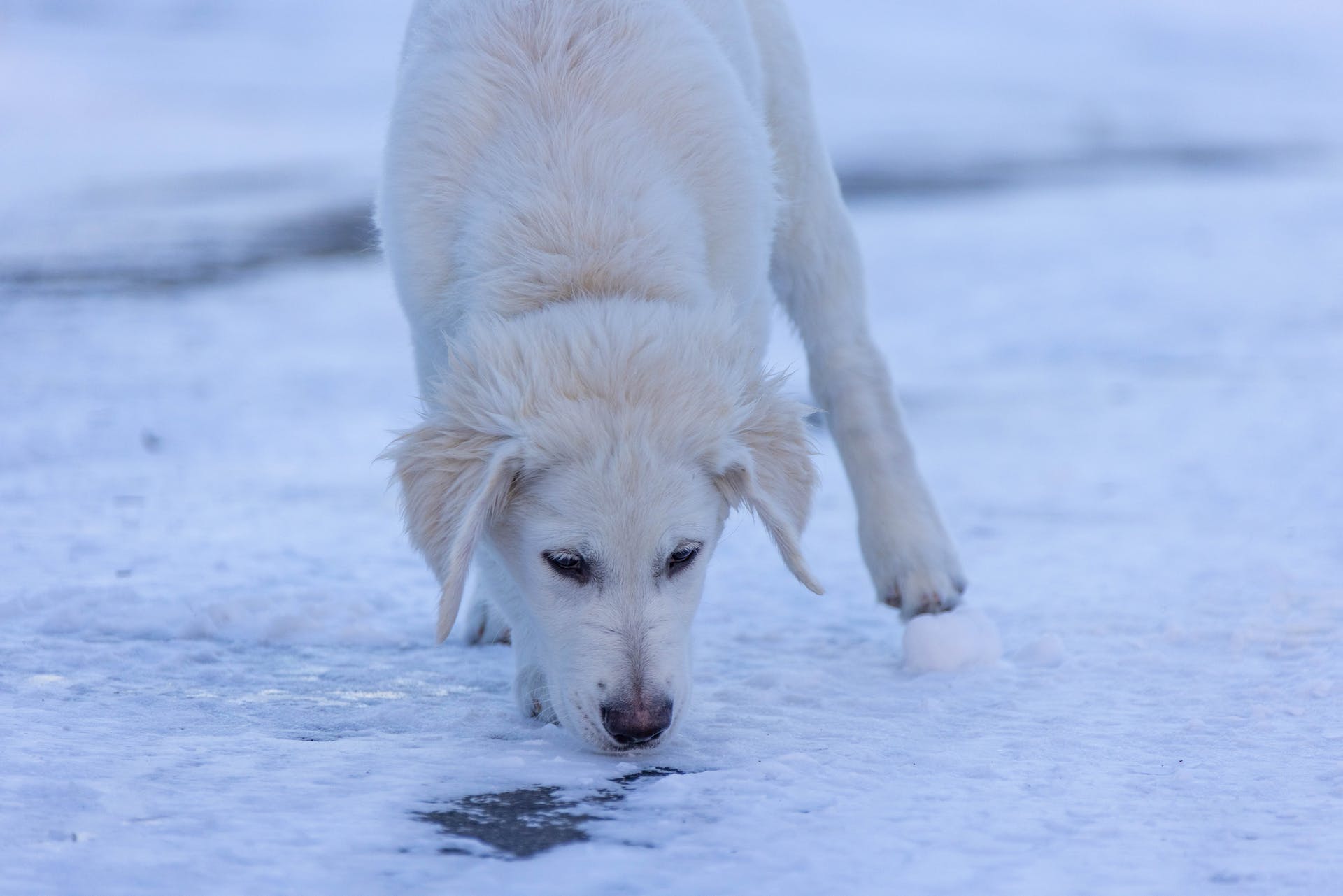
Even with these factors, your dog is still able to explore a world of scents that’s entirely hidden to us. And in many cases, this might even save people’s lives.
Where a dog’s sense of smell can save lives
Besides their natural instincts, dogs around the world undergo intensive training to put their skills to the test. And in many cases, their sense of smell has even saved lives.
Search and rescue dogs
Search and rescue (SAR) dogs are trained to locate missing people from miles away. They’re especially useful for locating survivors in disaster-stricken areas, like those that have been hit by hurricanes, floods, or earthquakes. Here’s Sheba, a Husky-Lab mix who helps her SAR team find missing people with the help of her Tractive GPS:
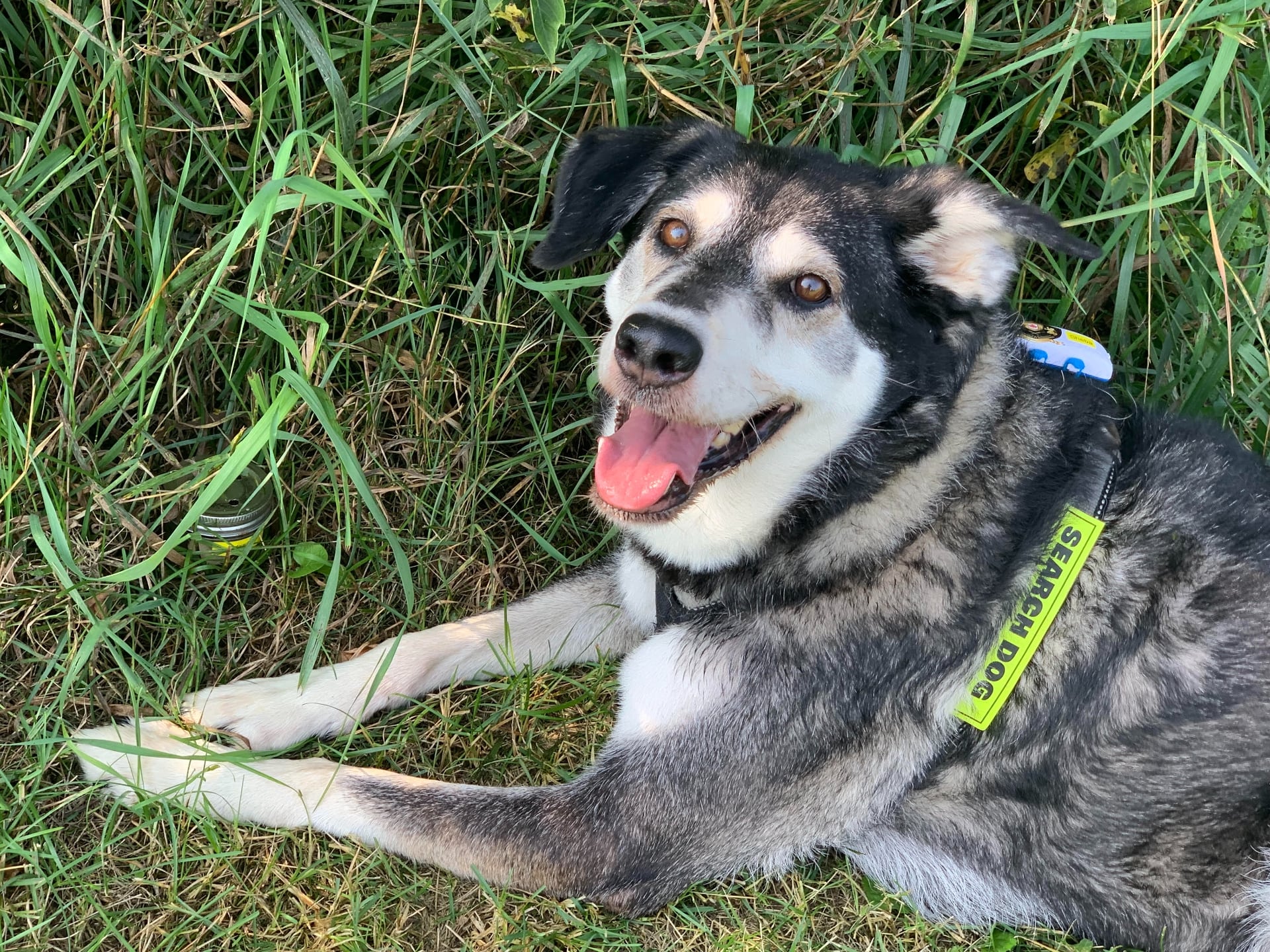
Besides these, water-loving dogs like Newfoundlands are also used for water rescues. Along with their sense of smell, their strength and easygoing temperaments help calm down a rescued survivor once they’re found.
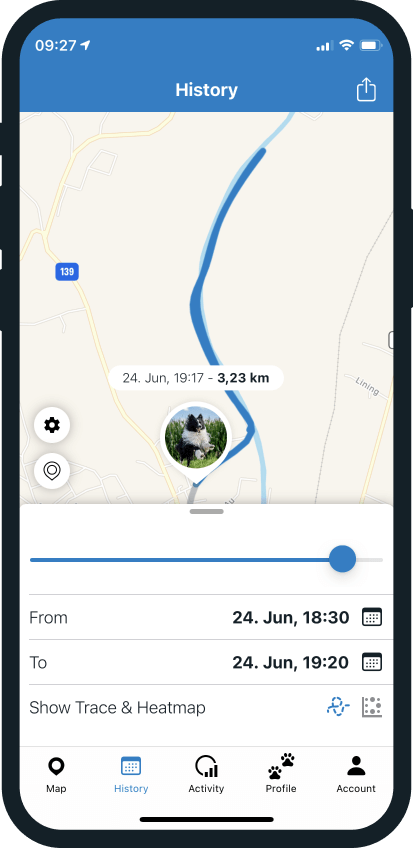
Ontario-based SAR expert and trainer William Bolton and his dog, Sheba both rely on Tractive’s life-saving technology for their search and rescues. (Especially water rescues.) In fact, K9 search and rescue teams around the world rely on Tractive’s LIVE tracking and Location History to find both missing people and pets.
When an elderly man went missing in their neighborhood for several days, Bolton used Tractive to trace where Sheba went off searching and sniffing around. Along with the authorities, they followed her trail via GPS and real-time tracking. With this, they were able to quickly find the missing man alive.
Pictured here is a glimpse of Tractive’s LIVE tracking features – which shares real-time updates of where your dog is every 2-3 seconds. Perfect for tracking them the next time they wander off somewhere to investigate a new sound or smell.
So you can have complete peace of mind as a dog parent – and never have to worry about where they are again.
Police sniffer dogs
Some dog breeds are specifically trained to sniff out narcotics, explosives, and other illegal substances at airports, border crossings, and other security checkpoints. German Shepherds excel at these tasks, even able to sniff out substances when hidden within luggage or vehicles. Both keeping us safe and preventing criminal activities.
Tracking dogs
Police and law enforcement agencies often train dogs to track and follow a suspect’s trail. (Often over long distances.) These dogs can pick up on scents left behind on the surfaces of objects or in the air. Tracking dogs help solve crimes and apprehend criminal suspects.
In fact, one of the most famous cases of a tracking dog was a Bloodhound named Nick Carter. Born in 1899, Nick is credited with over 650 finds and bringing 2,500 criminals to justice. He was especially skilled at tracking very old scent trails – even following one for over 55 miles! In another case, he even sniffed out an arsonist who’d burned the evidence and covered his tracks.
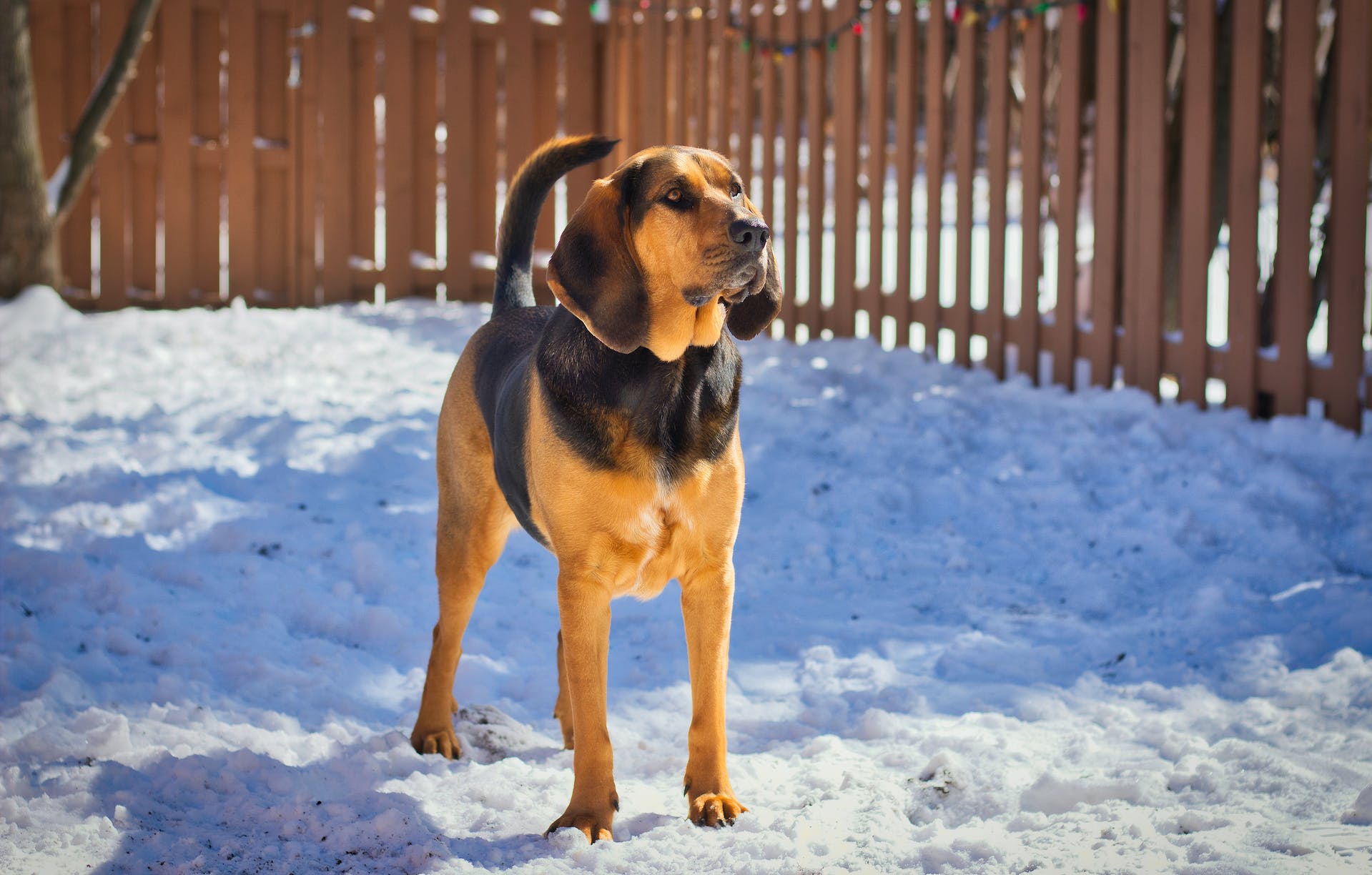
In fact, tracking dogs have popularized a sport known as “mantrailing” – where the aim is to find a certain person on site or within buildings, only with the help of a specific article with their scent. (Like a shirt.) However, police tracking dogs usually follow scents closely from the ground.
Medical detection dogs
With the help of their Jacobson’s organ, dogs are able to sniff out chemosignals from our bodies. Which can help them both perceive when we’re sad or stressed out – but also if we’re experiencing a health condition. In fact, medical detection dogs are trained to identify conditions like diabetes or even cancer based on a person’s scent. So, yes, with the right training, your dog literally can sniff out illnesses!
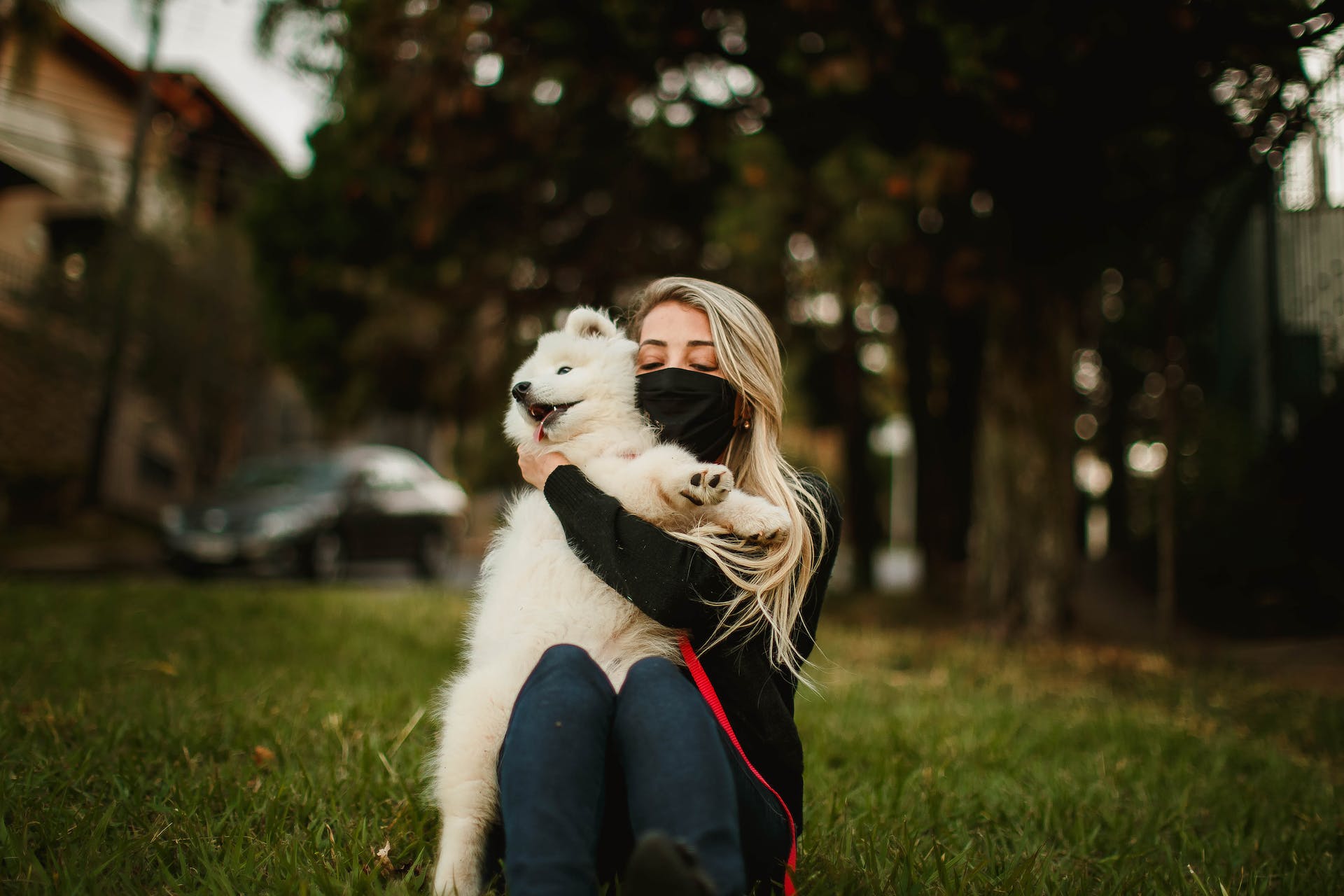
It’s why dogs tend to make excellent service dogs, who are trained to support people with disabilities. Or therapy dogs, who provide comfort to people in care environments, like hospitals and retirement homes. Psychiatric service dogs can even detect when their parent is experiencing a psychiatric emergency – and nudge them to take their medication on time.
With this extraordinary sense of smell, dogs around the world are helping keep us safe and healthy. Their sensory superpowers are a testament to the deep connection between their noses and brains.
At the same time, your dog sniffing around is also one of the primary reasons they might end up getting lost. And even with their sensory superpowers, it might not always be a guarantee they’ll return home, safe and sound. Here’s what you can do instead to keep your buddy safe always.
How your dog sniffing around can end up getting lost – and what to do
Your dog’s sense of smell actually underlies the reasons they tend to run away. Some of which include:
- Being in heat. Male dogs don’t tend to go in heat – but once they sniff out a female dog in heat, they’re more likely to jump the fence to go and say hello. Oftentimes, this might not be in your neighbor’s backyard – but rather several miles away.
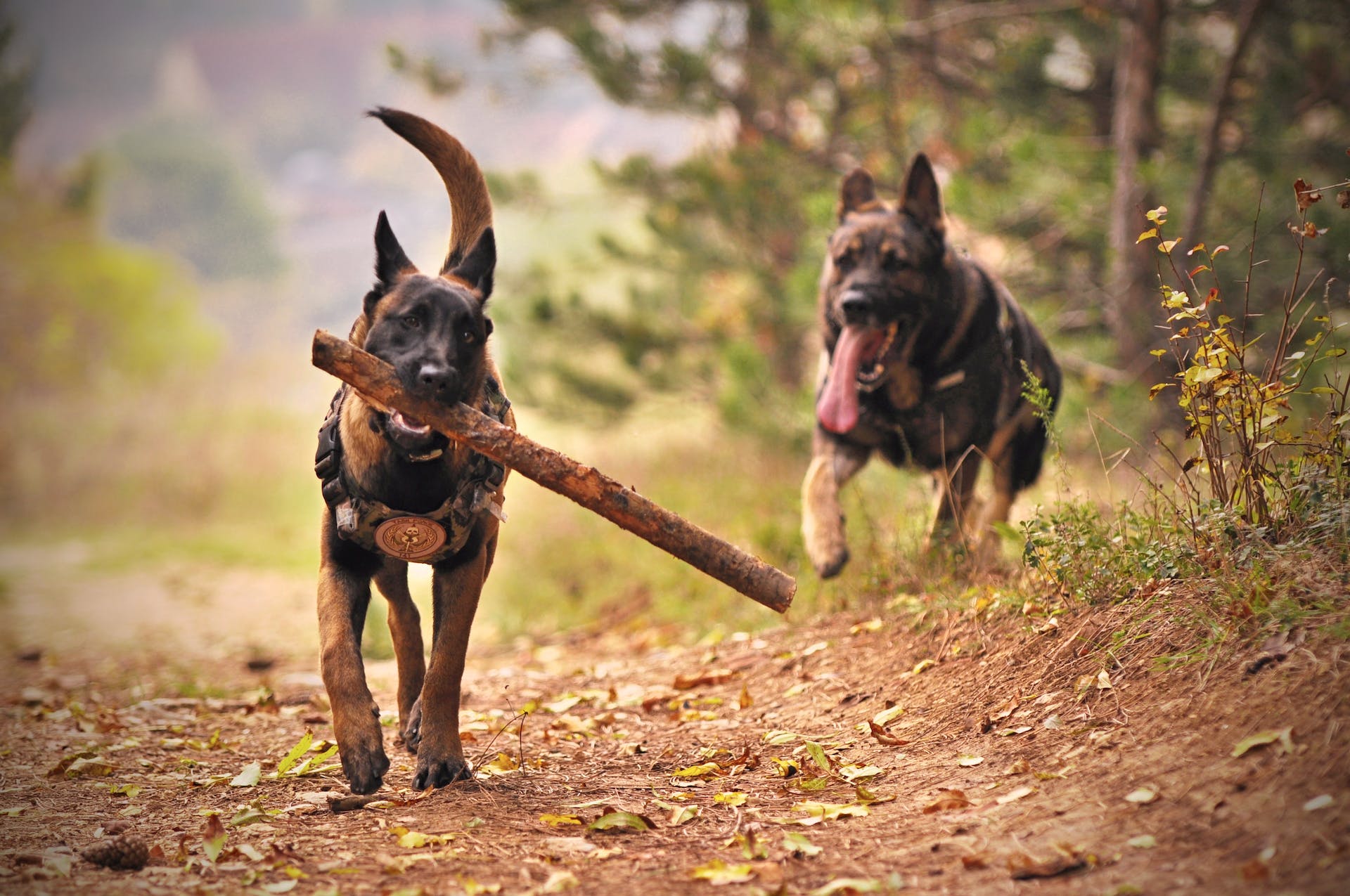
- Having a high prey drive. Dogs with a higher prey drive are more likely to react instinctively to the scent of a woodland animal or “prey” – and begin chasing it instead. Which might also take them several hundreds of miles away from safety once they’re locked on.
- Boredom. Younger, untrained dogs (like puppies) are more likely to run off to explore some fascinating new scent in their environment – either out of curiosity or boredom. Which, since their senses might not be developed yet, can make it difficult for them to sniff their way back home.
Read more: Why dogs run away
You might think your dog can sniff their way back home – and in many cases, you might be correct. But exploring the great outdoors comes with dangers, big and small. And you’d rather not leave your dog’s safety to their noses alone.
Keep your curious dog safe – with Tractive’s life-saving technology
Tractive pet parents around the world are keeping tabs on their dog’s locations – no matter how far they wander. Like Happy, an off-leash Golden Retriever, who caught on to a scent and ran off into the woods on his first hike in the Siusi Alps.
Despite panicking, his mum Francesca was able to locate him in no time with the Tractive app:
“Happy is a good dog and at the end of the day, he always comes back. Well, except the time I brought him for our first time to the Siusi Alps. These mountains are known for the intricate paths and the beautiful flora. I was there with Mac, Happy and my family when Happy got lost. Whether this happened because he went after a deer, or not, this is still not clear to me. What was clear is that he was gone.“
Then I remembered that Happy had the GPS tracker clipped on. I immediately switched on the LIVE Tracking mode and started breathing more easily the closer I got to his position. I could follow his path, live, directly on my phone and the position was so accurate that… finally there Happy was, sipping water from the source on a mountain’s edge.”
– Francesca & Happy, Italy
Read the full story of Happy, Francesca, and how Tractive’s life-saving technology is keeping dogs and cats safe around the world.
Discover GPS & Health Trackers For Dogs
Losing your dog can be a terrifying experience. But limiting their freedom and curiosity isn’t the way to go. Rather, invest in your very own Tractive GPS to track your dog in real-time – and never experience the fear of losing your buddy ever again.
Never lose your dog again – no matter how far they smell or roam
Your dog’s nose is a finely-tuned instrument that can allow them to navigate and interact with the world in ways we can only imagine. They’re picking up on scents from weeks or even months ago – and across several miles. So the next time you see your dog sniffing around, take a minute to appreciate how they’re exploring and learning the world around them.
If your dog’s sense of smell leads them to run away to investigate, we’ve got you covered. Secure your peace of mind with your very own Tractive GPS tracker – and never worry about where your dog is off sniffing around. (Near or far.)
Can dogs “see” with their noses? Some studies show how even dogs who have lost their vision can adapt more quickly and easily to their surroundings than humans. This short TED talk expands further:
